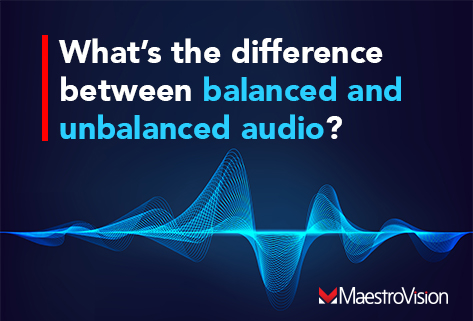Audio is more important than video. An interview is more about what the person says rather than their behavior in the interview room. For this reason, it is crucial that we put particular emphasis on the audio process. This article will delve into the definition of balanced and unbalanced audio.

Balanced audio vs Unbalanced audio
To properly capture the human voice, it is important to obtain all the bandwidth frequencies that are emitted by the person’s voice. For this reason, it is imperative that all audio components, wirings and connections are in a balanced form and not unbalanced.
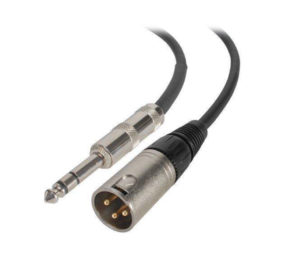
Balanced audio cable

Unbalanced audio Cable
It is important to understand that an audio cable acts as an antenna. Our environment is invaded by electromagnetic frequencies coming from power supplies, transformers, neon lights and so on, that are induced into the audio wires, producing a background noise as can be seen on figure 16.
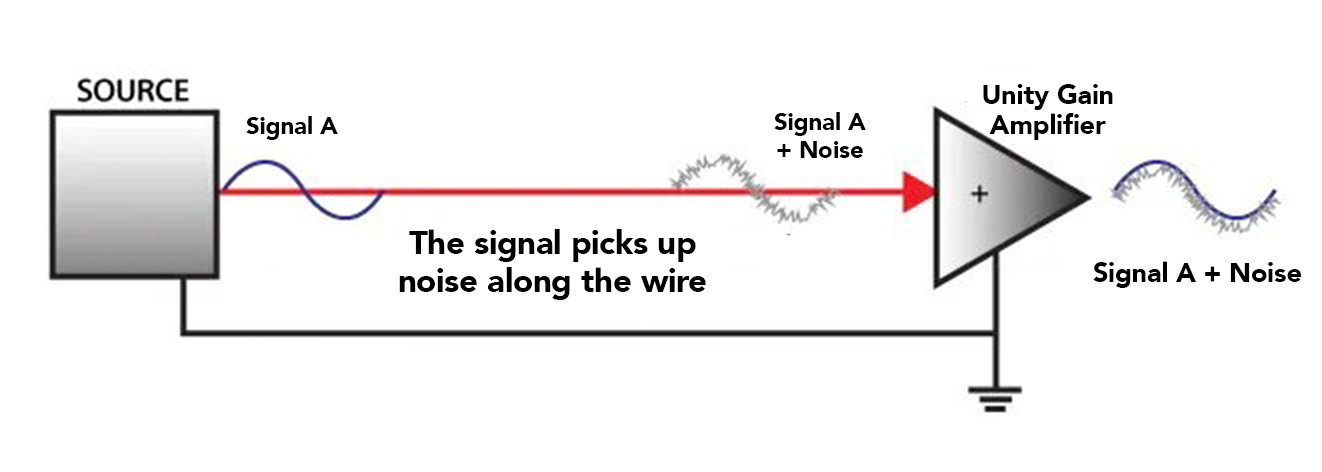
Unbalanced audio signal
In the case of balanced audio, instead of having a single wire to drive the audio, there are two. The audio signal is transmitted on two wires, which have a phase shift of 180 degrees between them. The two wires are “twisted” together to ensure that the same noise will be induced in both wires at the same time.
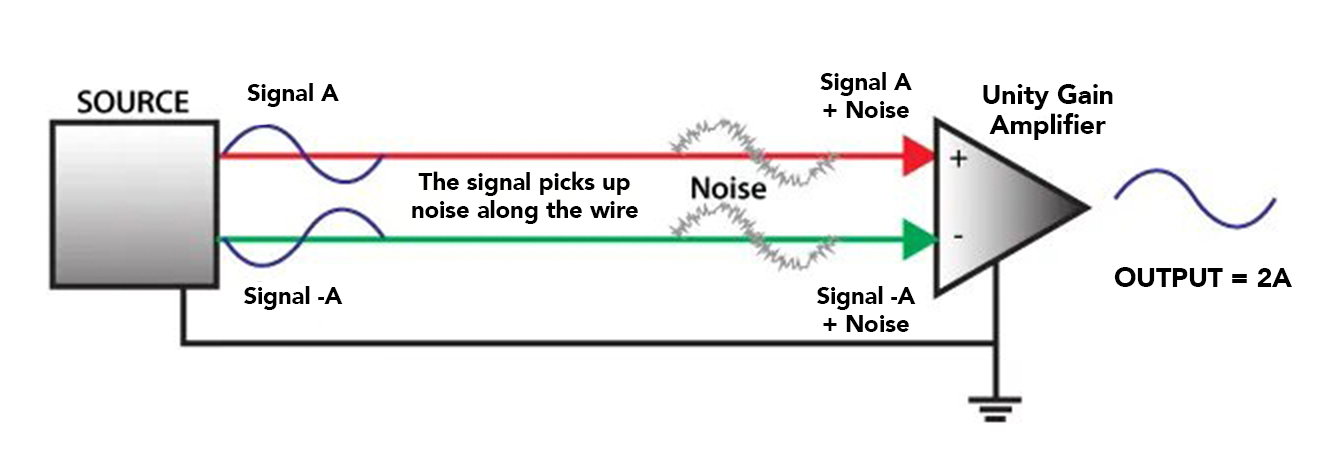
Balanced audio signal
In the next image, we have represented noises by small waves for explanation purposes. Note that the small waves are in phase for both A+ and A- sides while the audio signals are out of phase relative to each other.
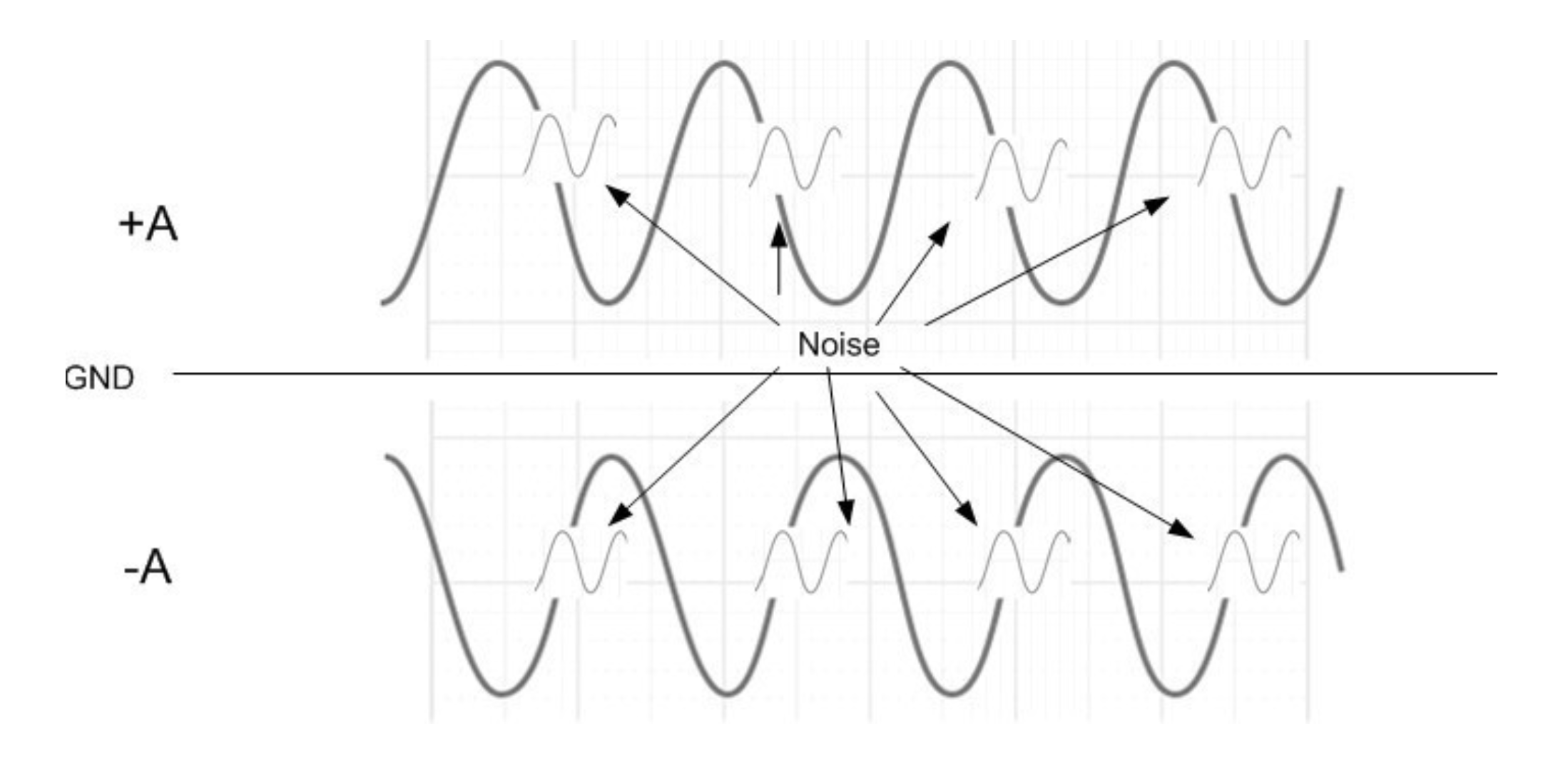
Example of balanced audio signal with noise
What happens when we subtract the signal (+ A) and the signal (- A)? Concerning the audio signal, subtracting one signal from another, corresponds to adding them if we shift (-A) signal of 180 degrees. Therefore (+A) – (-A), becomes (+A) + (+A) which results in an increase double A signal, as shown in figure
19. In regards to the noise signal, given that both signals are absolutely identical when you do the subtraction between the two, they cancel out one another completely.

Result when we subtract: (+A) - (-A)
The result is a perfectly clean audio signal, destitute of any electromagnetic induction.
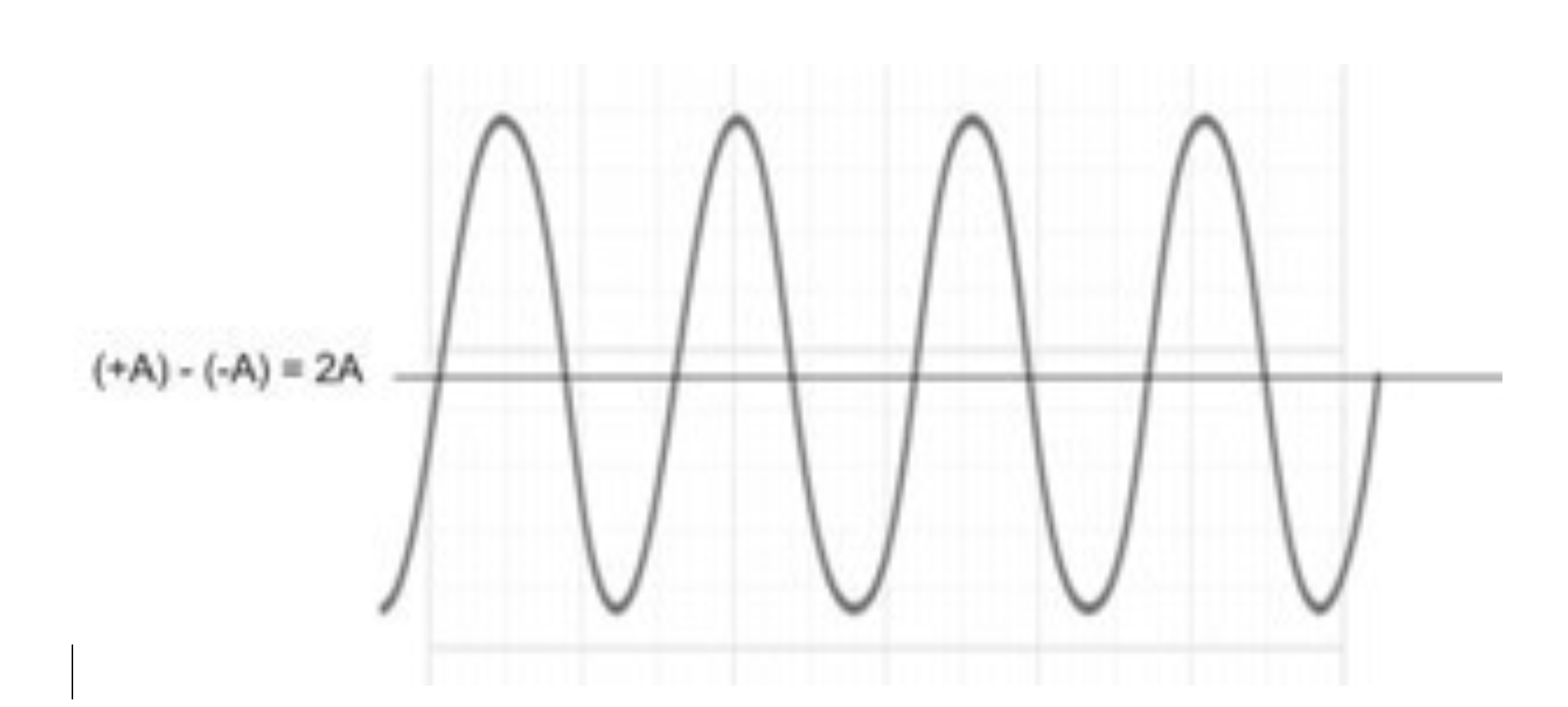
Result when we subtract: (+A) - (-A)
It is essential to have an audio signal without induced noise. Since noises mainly affect high frequencies, a reduction in the high frequencies will make it difficult to distinguish between the “S” and “F”. This will make virtually incomprehensible records where the suspect does not speak well.
Another consideration is the difference in amplitude signals between balanced and unbalanced cables. The amplitude of a balanced signal is 4 volts while the amplitude of an unbalanced signal is 1 volt. The loss in amplitude in an audio cable is in volt per length. In a twenty-foot cable, the loss averages .5 volt. At the end of a twenty-foot balanced audio cable, you will lose .5 volt on 4 volts that is a loss of 12.5 % while the loss of an unbalanced audio cable is .5 volt on 1 volt which is a loss of 50%.
Have any questions regarding balanced or unbalanced audio? Shoot us an email at info@maestrovision.com.

